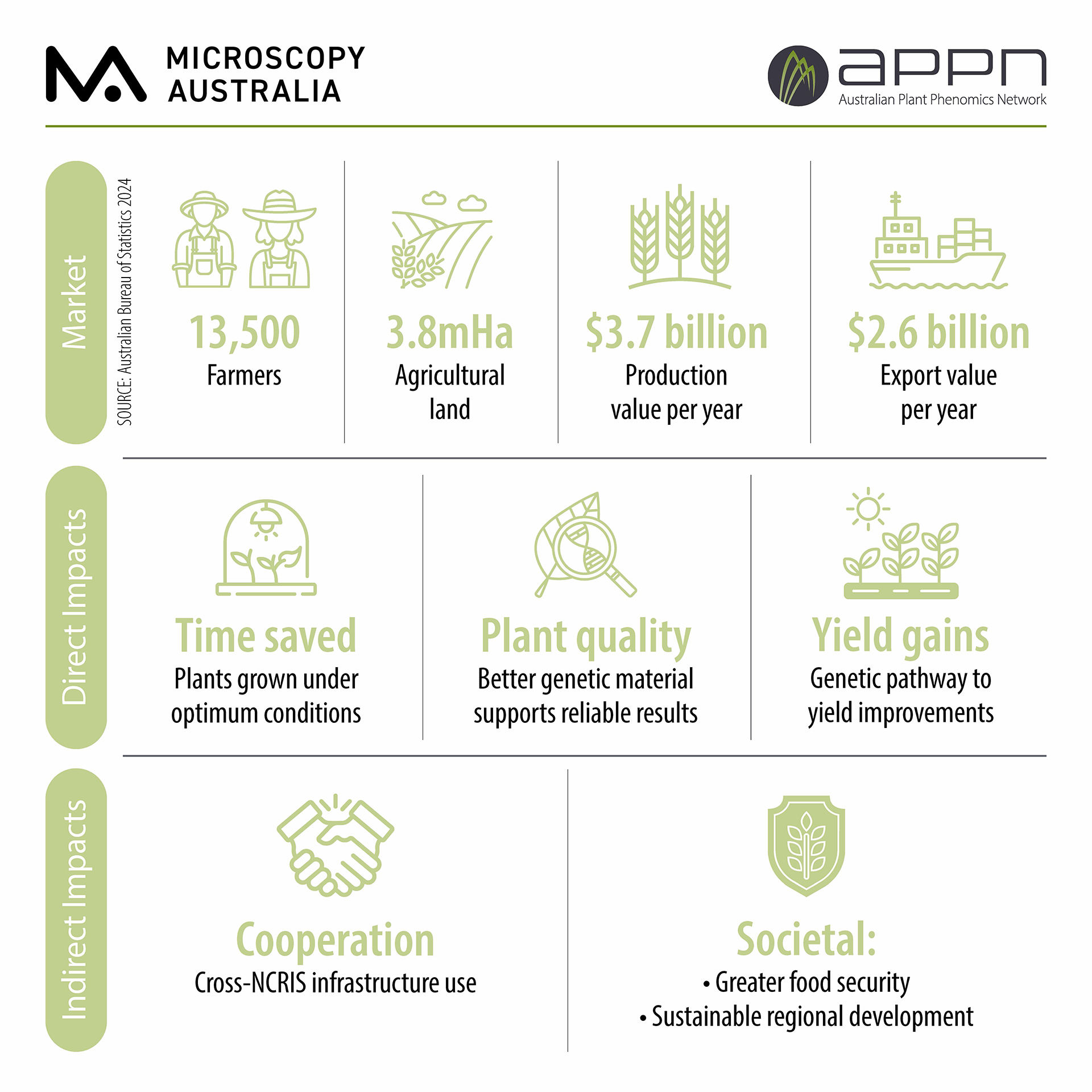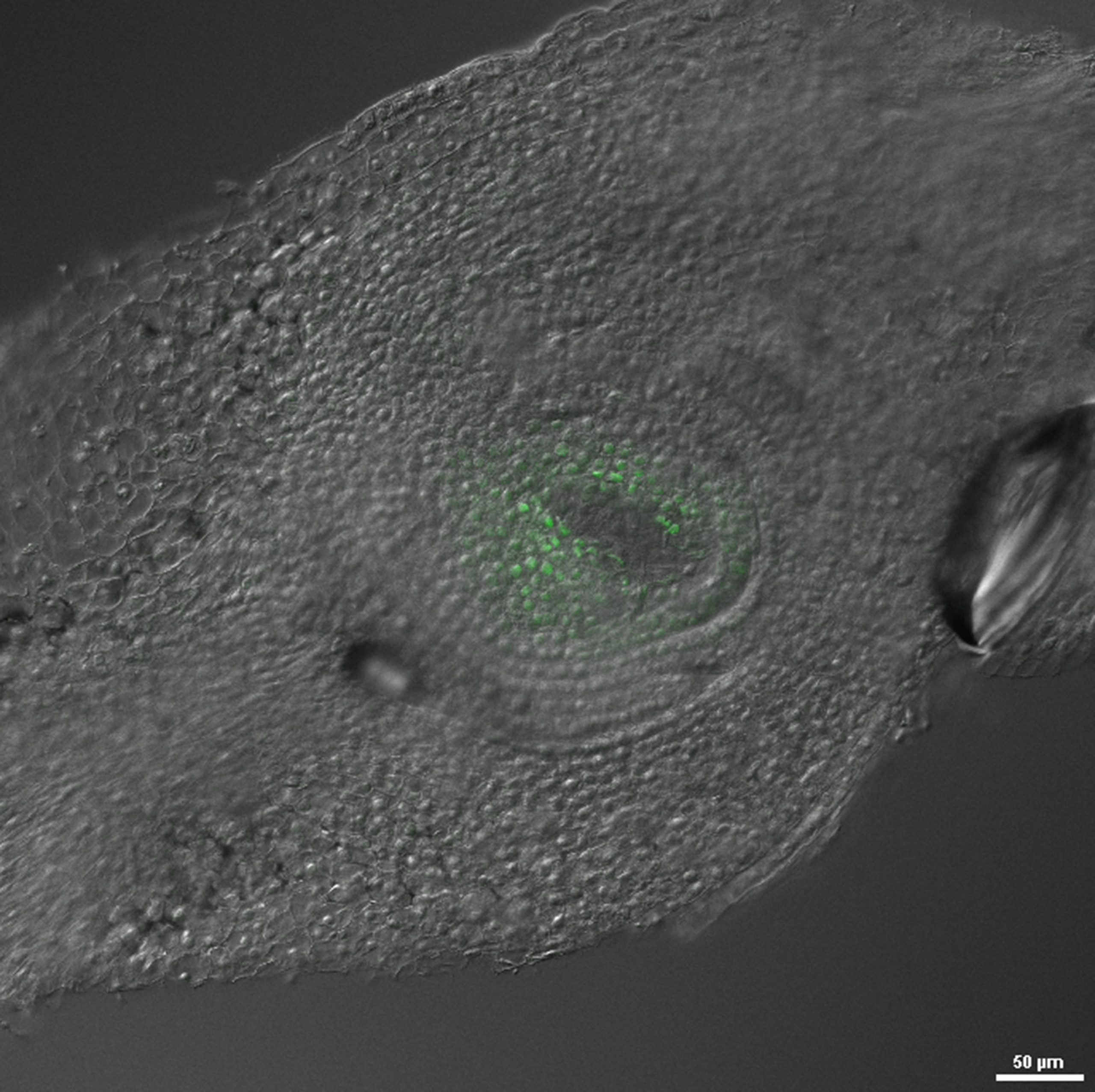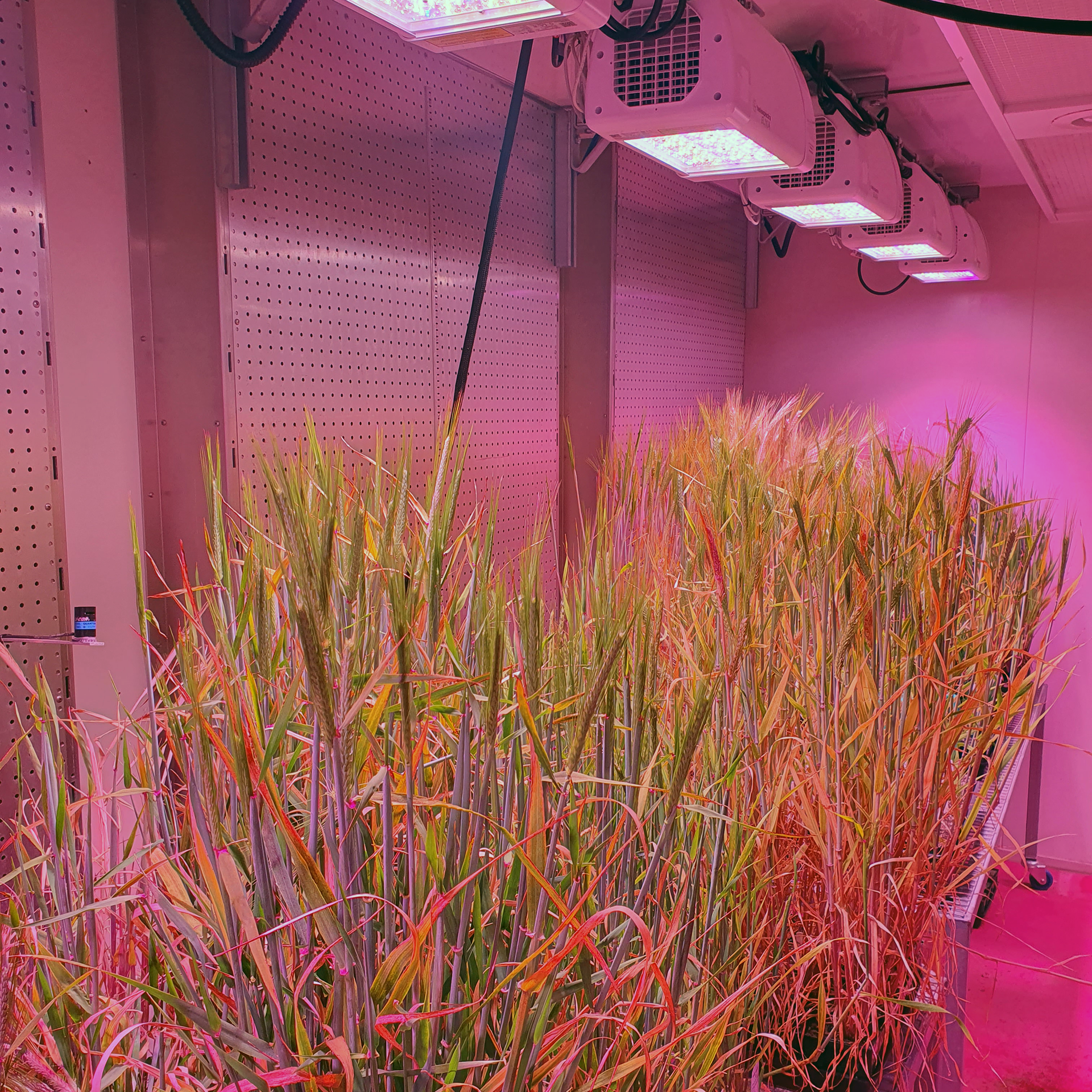Enabled by two NCRIS* facilities, Microscopy Australia and the Australian Plant Phenomics Network, this knowledge is vital for developing new genetic strategies to protect and optimise crop yields in the face of a changing climate, helping to safeguard future yield security.

Credit: Australian Plant Phenomics Network
Barley is Australia’s second most important cereal crop (after wheat), and Australia is a key player in global barley markets. In 2023/24 13,500 farming businesses grew 3.8 million hectares of barley, which yielded 13.5 million tonnes of grain with a total value of $3.7 billion[1]. At the same time, Barley growers face mounting constraints including a warming climate, water scarcity, soil constraints and rising costs of production. To stay competitive and meet global demand, innovative solutions are needed to improve barley’s performance and resilience.
To overcome natural genetic barriers to barley yield, Professor Tucker’s team focused on the MADS31 protein. MADS31 is mainly found in a specific tissue called the inner nucellus, which surrounds and supports the female reproductive cells (the embryo sac) in the ovule. It acts like a switch that keeps the supporting tissue healthy and ensures the female reproductive cell develops properly before fertilisation. It does this by preventing genes that are meant to be active after fertilisation from being switched on too early.
A key target gene that MADS31 keeps “off” before fertilisation is called NRPD4b. NRPD4b is normally active in the grain after fertilisation. When MADS31 is missing or not working correctly, the inner nucellus tissue becomes deformed and dies prematurely, causing seed development genes like NRPD4b to be prematurely activated. This appears to disrupt the supporting tissue’s function and contributes to problems with the female reproductive cell development, ultimately leading to reduced seed production.
Understanding the genes and processes involved in forming female tissues in cereal crops is challenging because their reproductive organs are hidden deep within the plant. A range of techniques at the Microscopy Australia and Australian Plant Phenomics Network facilities at The University of Adelaide were used to overcome this challenge. For example, transgenic plants that produced the MADS31 protein fused to a green fluorescent protein were grown at The Plant Accelerator®. Laser scanning confocal microscopy at Adelaide Microscopy was then used to detect where this fluorescent protein accumulated within the ovule tissues, revealing the location and quantity of MADS31.

Confocal laser scanning microscopy image showing the accumulation of green fluorescent proteins within the ovule, indicating the location of MADS31. Captured at Microscopy Australia’s University of Adelaide facility.

Barley in the growth room at the Australian Plant Phenomics Network’s Adelaide facility.
By identifying MADS31 and its target NRPD4b, the research team have revealed a mechanism crucial for coordinating the transition from ovule to seed development in barley and bread wheat. This insight is essential for guiding the development of advanced genetic solutions to strengthen crop resilience and productivity in the face of climate change, supporting national and global food security objectives.
Explore the paper:
X. Yang et al., Nature Plants 2025
DOI: 10.1038/s41477-025-01915-z
* About NCRIS: Funded by the Australian Government, the National Collaborative Research Infrastructure Strategy (NCRIS) supports a national network of research infrastructure providers, delivering world-class equipment, expertise, and services across diverse fields — from gene editing to space exploration. This network enables cutting-edge research, development and translation for the benefit of all Australians.
[1] Australian Bureau of Statistics 2024
August 7, 2025